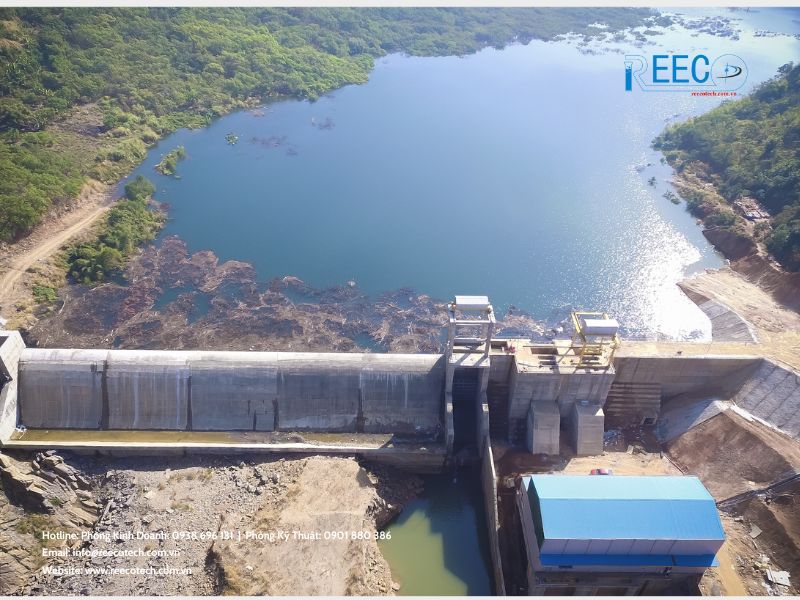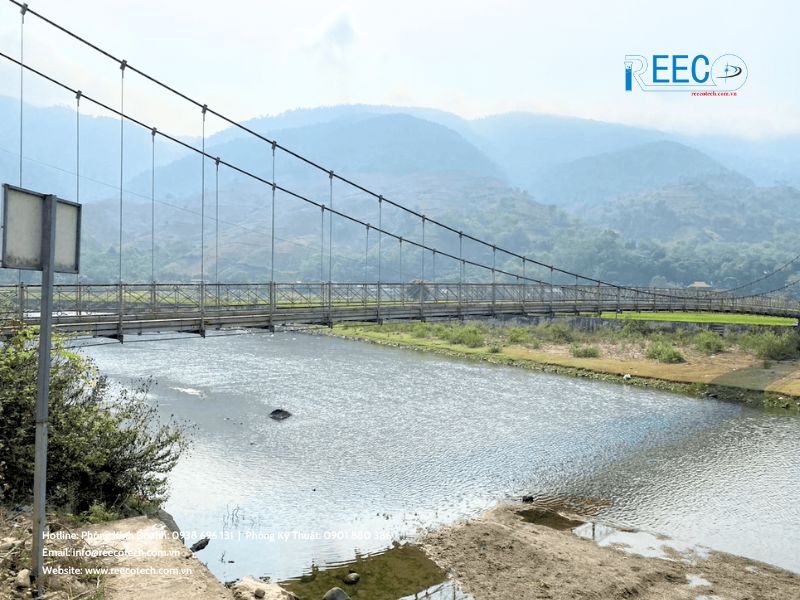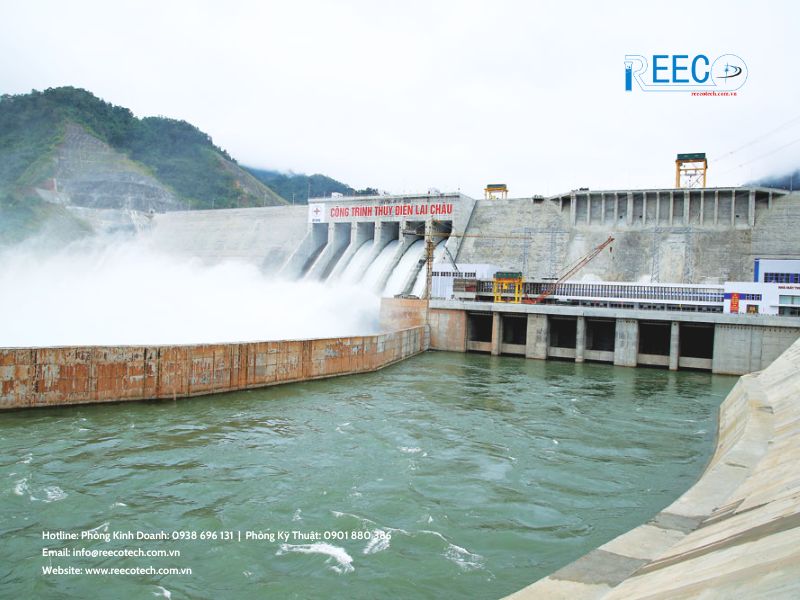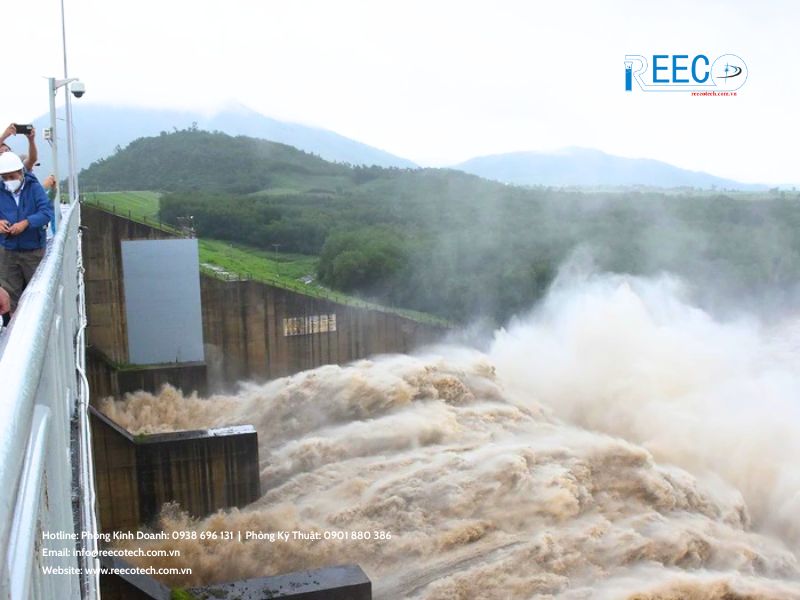Hydroelectric dam and reservoir monitoring systems are crucial tools for tracking and measuring critical parameters related to operations at hydroelectric dams. These systems serve a vital purpose in ensuring the safety, efficiency, and effective operation and regulation of hydroelectric dam reservoirs. From controlling water flow and flood management to measurement and emergency response, these systems play a pivotal role in ensuring the integrity and safety of these critical infrastructure projects.

Reservoir Management in Hydroelectric Systems
Downstream areas of dams and reservoirs often face inherent risks posed by natural disasters such as floods, earthquakes, or dam failures. These events can lead to significant loss of life and property. Recognizing the importance of safeguarding these structures, developed nations like Canada, France, the United States, China, and Nordic countries have accumulated extensive experience in dam and reservoir survey, design, and operation. The implementation of water quality monitoring systems plays a key role in continuously monitoring the condition and ensuring the stringent safety management of these structures.
In accordance with Decree No. 114/NĐ-CP dated September 4, 2018, issued by the Government of Vietnam regarding dam safety management, detailed and stringent regulations have been established to ensure the safety of dams and reservoirs. This decree encompasses all phases, from survey and design to operation, contributing to enhanced management efficiency and minimizing the risk of incidents.
Key Parameters Monitored in Hydroelectric Reservoirs
Hydroelectric reservoir monitoring encompasses a range of critical parameters:
- Reservoirs with flood control gates: Monitoring upstream and downstream water levels, precipitation, forecasting inflow to the reservoir, and potential water level increases in the reservoir.
- Large hydroelectric reservoirs with uncontrolled spillways: Monitoring upstream and downstream water levels, calculating discharge.
- Hydroelectric reservoirs with both controlled and uncontrolled spillways: Monitoring upstream and downstream water levels, calculating discharge.
Small hydroelectric reservoirs with uncontrolled spillways: Monitoring upstream and downstream water levels, as well as water levels at the spillway.
Requirements for Hydroelectric Reservoir Monitoring
Hydroelectric reservoir monitoring demands stringent requirements to ensure safety, efficiency, and environmental protection. Some key monitoring requirements for hydroelectric dam reservoirs include:
- Water level sensors: Measuring and recording water levels at key locations within the reservoir. The collected data facilitates forecasting discharge, adjusting flow rates accordingly, and preventing overload situations.
- Flow sensors: Installing flow sensors at outlet points to monitor and control water flow.
- Water quality monitoring: Monitoring water quality parameters such as dissolved oxygen concentration, pH, organic compound content, microbial load, and suspended solids to ensure no adverse impact on the environment and aquatic ecosystems.
- Measuring ground deformation near hydroelectric dams: Detecting signs of ground movement. Automatically activating automatic and emergency alarms to alert management and users.
Adherence to safety and environmental standards: Complying with regulatory safety and environmental standards mandated by government agencies.
Significance of Implementing Hydroelectric Reservoir Monitoring
- Reservoir regulation and operation: Enabling adjustments to accommodate fluctuations in flow, water demand, and structural changes. This information is derived from monitoring inflow to the reservoir, water demand, and structural condition.
- Ensuring structural safety and emergency response: Hydroelectric structures adhere to stringent safety calculations based on engineering standards. However, various factors, including survey, design, construction, and management quality, as well as external events like storms and earthquakes, can lead to incidents and compromise structural safety. Therefore, continuous monitoring from the construction phase to operation is crucial to assess the structural health status and determine whether the structure is safe. If unsafe, necessary measures or remedial actions must be implemented.
- Dam and community safety: Early detection of potential hazards such as rising water levels, earthquakes, or ground movement. Activating warning and emergency response systems to protect the dam and surrounding communities.
- Optimizing efficient management processes: Data from monitoring systems guides decisions on water discharge, flow adjustments, and flood management. Optimizing operational efficiency and resource utilization. Flow and water level data aid in identifying trends and forecasting future scenarios, such as high water levels, droughts, or floods.
- Reporting and monitoring: Data from monitoring systems provides real-time, accurate information on dam operations and environmental conditions. Remote management capabilities facilitate convenient management and oversight. This is carried out by dam management teams under the supervision of government agencies.
- Environmental protection: Monitoring systems measure water quality parameters to ensure that discharged water does not negatively impact the aquatic environment and ecosystems.
Reecotech: A Provider of Reliable Reservoir Monitoring Systems in Vietnam
Reservoirs play a crucial role in energy generation, irrigation, and flood control. However, potential failures in these reservoirs can have catastrophic consequences for dams, the surrounding environment, and even human lives. Therefore, early detection of potential failures is of paramount importance.
Reservoir monitoring systems play a pivotal role in achieving this objective. These systems encompass sensors installed at various locations within the reservoir to collect data on water level, flow rate, water pressure, water quality, and other pertinent parameters. This data is transmitted to a central control center and processed into real-time information, enabling reservoir managers to make informed and timely decisions regarding operations and incident response.
Reecotech takes pride in being a leading provider of meteorological and hydrological monitoring systems for reservoirs. With over 12 years of experience in supplying, designing, and integrating meteorological, hydrological, and environmental solutions, Reecotech has successfully collaborated with and implemented projects for numerous customers, businesses, and organizations nationwide. The company is committed to delivering high-quality products that meet specific needs at the most competitive prices.
For inquiries regarding Reecotech’s solutions, please contact their hotline: 0938 696 131




